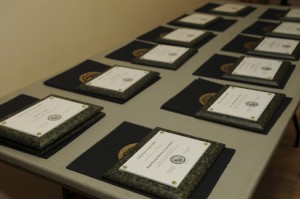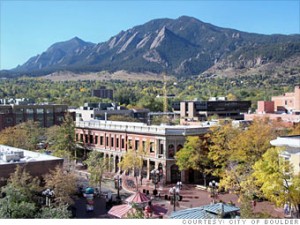 Take a hypothetical investment in your home of $1,000 for a new hot heater that will save $100 a year. Most people will “do the math” and determine that the heater will pay for itself in ten years, then decide that this is too long and put the money into something else e.g; a vacation or stashing it in savings. Unfortunately this usually isn’t the efficient or “correct” or choice though, and it has been influenced by the use of a distorting metric. An alternative metric which is just as simple to calculate is the simple return on investment or ROI. Rather than divide the savings into the cost, do the reverse and you get the effective “interest rate” of your investment a rather favorable return of 10%1
Take a hypothetical investment in your home of $1,000 for a new hot heater that will save $100 a year. Most people will “do the math” and determine that the heater will pay for itself in ten years, then decide that this is too long and put the money into something else e.g; a vacation or stashing it in savings. Unfortunately this usually isn’t the efficient or “correct” or choice though, and it has been influenced by the use of a distorting metric. An alternative metric which is just as simple to calculate is the simple return on investment or ROI. Rather than divide the savings into the cost, do the reverse and you get the effective “interest rate” of your investment a rather favorable return of 10%1
Some are arguing that in addition to the analogous EROI, we need to develop supplementary metrics to insure wise policies. The hope being that by crunching the numbers first we might—for instance—avoid tainting the public’s perceptions of all biofuels through bullish support of the inefficient conversion of some food crops to liquid fuel.
And what do we call the energy savings resulting from sound policy choices? One term that’s been used is the negawatt, but there is a proposal for a new unit: the Rosenfeld.
1. Compare 1–2% for a savings account or certificate of deposit, and a negative rate (depreciation) for common purchases such as automobiles or consumer electronics.




 It is time again for the city of Cambridge’s Go Green Awards, which recognizes businesses and organizations that take exceptional environmental actions in at least one of five areas—energy use, transportation, waste reduction, stormwater, and climate protection. Self nominations are accepted.
It is time again for the city of Cambridge’s Go Green Awards, which recognizes businesses and organizations that take exceptional environmental actions in at least one of five areas—energy use, transportation, waste reduction, stormwater, and climate protection. Self nominations are accepted.

 From last week’s
From last week’s